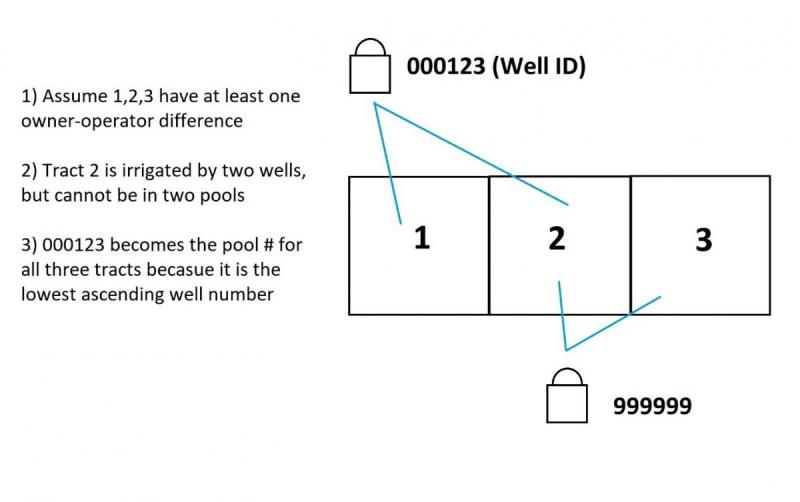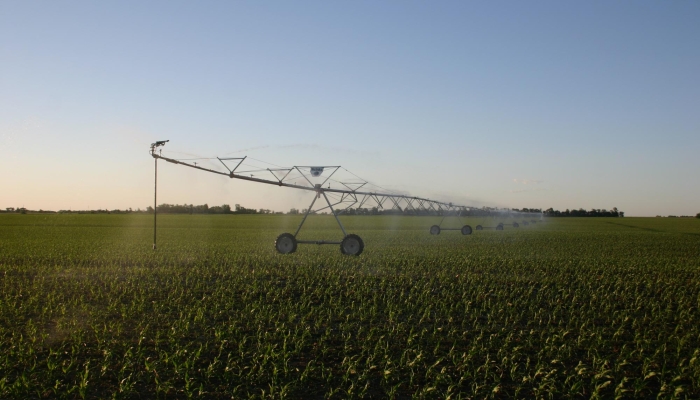Pooling of Irrigated Acres: an Introduction
In the event of groundwater use allocation, the NRD’s Rule 5 allows pooling of irrigated acres. Pooling is a process that combines irrigated acres from multiple fields, based on a common well, owner-operator, or by application between users, so that landowners and operators can average water withdrawal over the combined acres. In an allocation event, pooling can help farmers optimize allocated groundwater use for each parcel of land within a pool. Pooling has been used internally to calculate average water use throughout the district for several years. Average water use for a pool is calculated by dividing total water use (for parcels within a pool) by total number of acres within a pool. This formula determines inches applied per acre.
Recently, the Upper Big Blue NRD has partnered with firms Olsson and Sitka Technology Group to develop a Water Accounting Platform software. The software will integrate pooling principles with an interface that makes water use come to life spatially. This platform will allow operators and the district to make better water management decisions.
Pools can be calculated by three methods:
- Owner-Operator Pool: Same owner and same operator for a group of parcels
Owner-Operator pools are the default pool for all parcels. Any parcel belonging to the same individual landowner and farmed by the same individual operator is pooled if the parcel of land does not fall into any other types of pools. Pool number is determined by combining a parcel's owner number with primary operator number. For example: Pool No. 1738-402. The owner number is “1738” and “402” is the operator number.
- Well Pool: Parcel is irrigated by multiple wells. One or more of these wells irrigate more than one parcel with different operator/ownership.
When two or more parcels are irrigated by the same well, and there is a difference in either the owner or operator field of a parcel, the parcels must be pooled. The pool number used will be the Well ID number. When a parcel is irrigated by multiple wells and one or more of the wells irrigate other parcels with differing owners or operators, all parcels must be included in the same well pool. The lowest ascending well ID number that required the pool becomes the well pool number.

- Agreement Pool: Until an allocation is in place, agreement pools are not necessary. An agreement pool allows the owners and operators to pool parcels together based on written agreement. This could include combining parcels with multiple owners and one operator or splitting a parcel when there are two or more operators and wells.

